Lost in the publicity glare following the Apollo 11 Moon landing, two intrepid robotic spacecraft flew by Mars in the summer of 1969 and returned photographs and much useful scientific information about the Red Planet. Managed by the Jet Propulsion Laboratory in Pasadena, California, Mariner 6 and 7 were NASA’s next steps in the exploration of Mars following the pioneering flyby completed by Mariner 4 in July 1965. Each 908-pound spacecraft carried eight experiments to study the atmosphere and surface of Mars during their fly-bys of the planet. The experiments were: an infrared spectrometer; an infrared radiometer to measure the surface temperature of Mars; an ultraviolet spectrometer; an S-band occultation experiment; a thermal control flux monitor; a television camera system with wide- and narrow-angle telescopes; a celestial mechanics experiment; and a general relativity experiment.
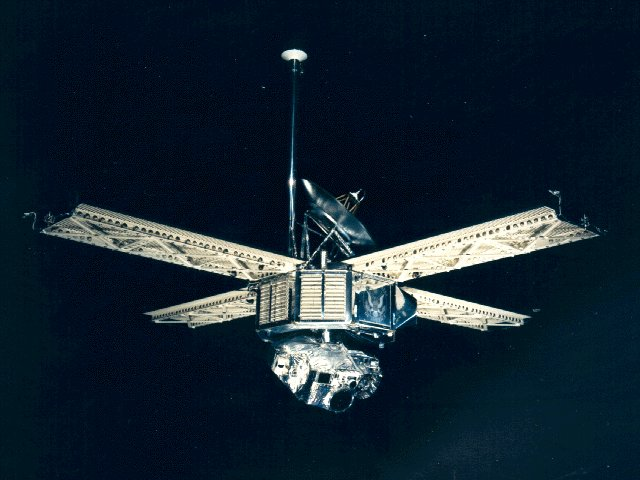
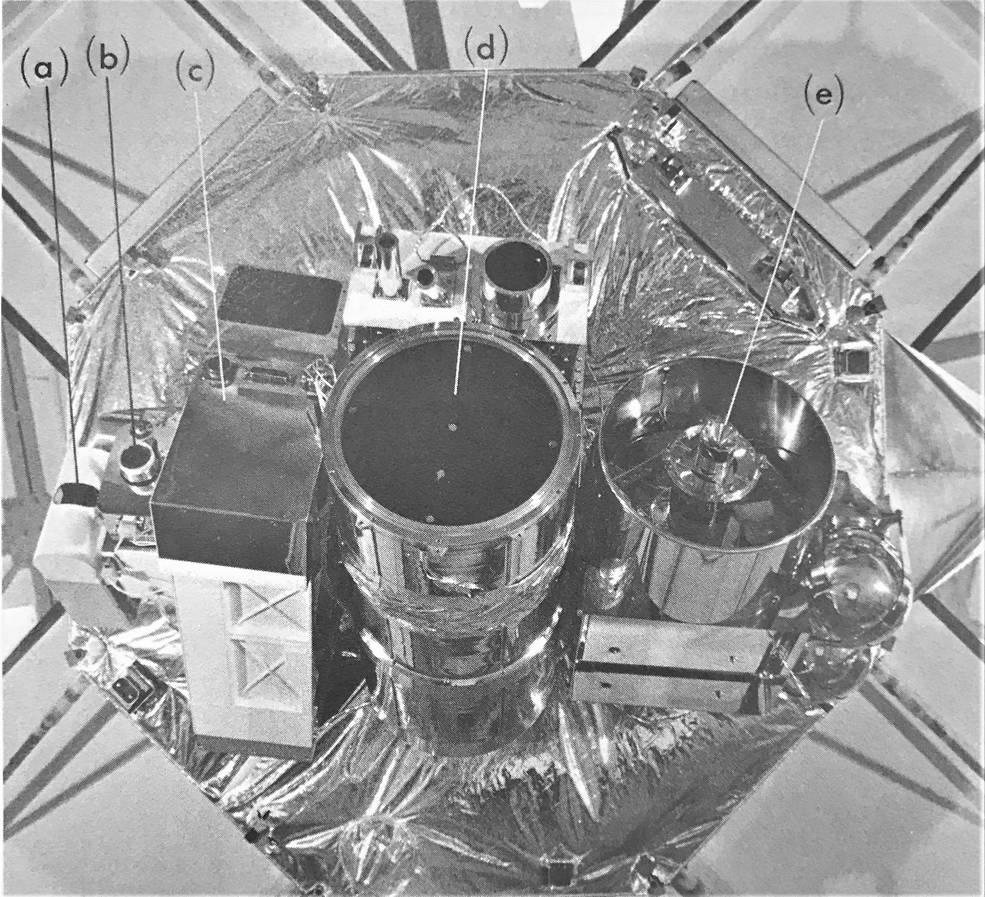
Left: Mariner 6 and 7 spacecraft. Right: Close-up of science instrument platform aboard Mariner 6 and 7 – a) infrared radiometer, b) wide-angle TV camera, c) ultraviolet spectrometer, d) narrow-angle TV camera, e) infrared spectrometer.
Launched on Feb. 25 and March 27, respectively, Mariner 6 and 7 arrived at Mars just five days apart despite being launched a month apart. After a flight of 156 days from Earth, Mariner 6 flew within 2,132 miles of Mars on July 31, roughly twice as close as Mariner 4’s flyby in 1965. Controllers lost contact with Mariner 7 for seven hours just five days before its planned flyby, but by Aug. 2, after quick replanning, they restored the spacecraft to full capability as it began its encounter with Mars. Three days later, it passed within 2,130 miles of Mars’ southern hemisphere. Both spacecraft flew behind the planet and a radio occultation experiment measured the surface pressure of the Martian atmosphere to be between 6 and 7 mb, or less than 10% of Earth’s atmosphere at sea level. After their successfully flybys, Mariner 6 and 7 sailed on into solar orbit.
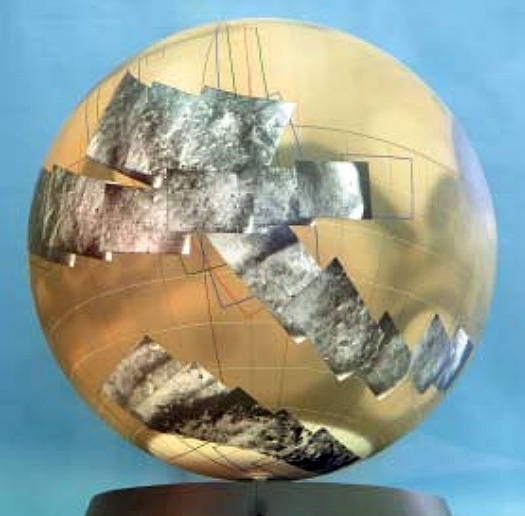
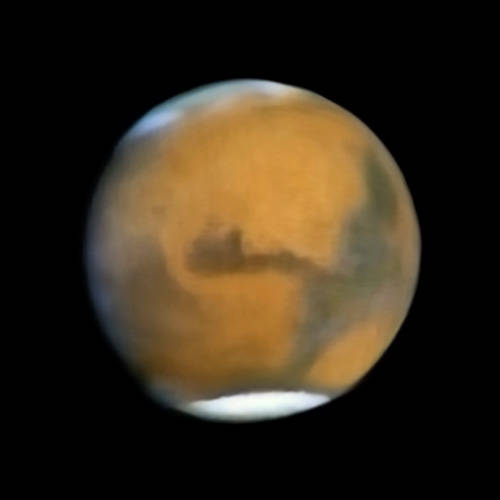
Left: Globe of Mars to show the areas photographed by Mariner 6 (top row of photos) and Mariner 7 (bottom row). Right: Three black-and-white photographs taken through different color filters were combined to create this color image of Mars taken by Mariner 7.
Earth-based telescopes in the 1960s could not reveal Martian surface features smaller than 62 miles. The Mariner 4 photographs in 1965 showed details as small as about two miles but the total area imaged covered less than 1% of the planet’s surface. This made relating the views seen in the Mariner 4 images to global features difficult. Mariner 6 and 7 took a sequence of far-encounter images that covered the entire planet at resolutions far greater than possible with Earth-based telescopes. The near-encounter close-up images covered about 20% of the planet’s surface, with resolution down to 900 feet using the narrow-angle camera.
By combining three black-and-white images taken by Mariner 7 through different color filters, scientists were able to reconstruct a color image of the planet that showed greater detail than any Earth-based photograph. In three of its photographs, Mariner 7 managed to capture an image of Mars’ larger moon Phobos as it passed below the spacecraft. Although the moon was close to the camera’s resolving power, it clearly appeared to be elongated in shape. This was the first photograph of a planetary satellite taken by a spacecraft.
During its encounter, Mariner 6 returned a total of 75 photographs, 50 during the far encounter phase and 25 during the near encounter. Mariner 7 added 93 far-encounter and 33 near-encounter photos. The infrared radiometers on both spacecraft indicated that the thin Martian atmosphere was composed almost entirely of carbon dioxide, as was the south polar cap.
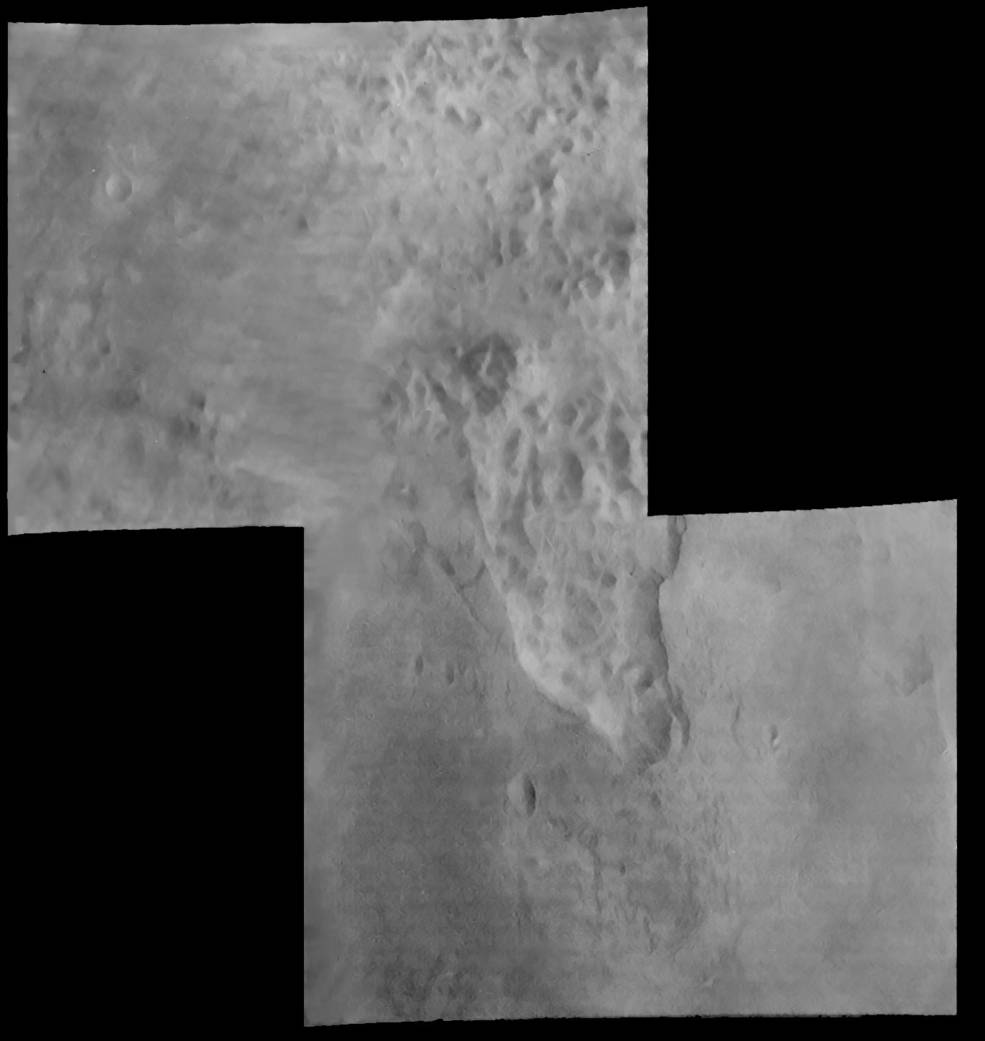
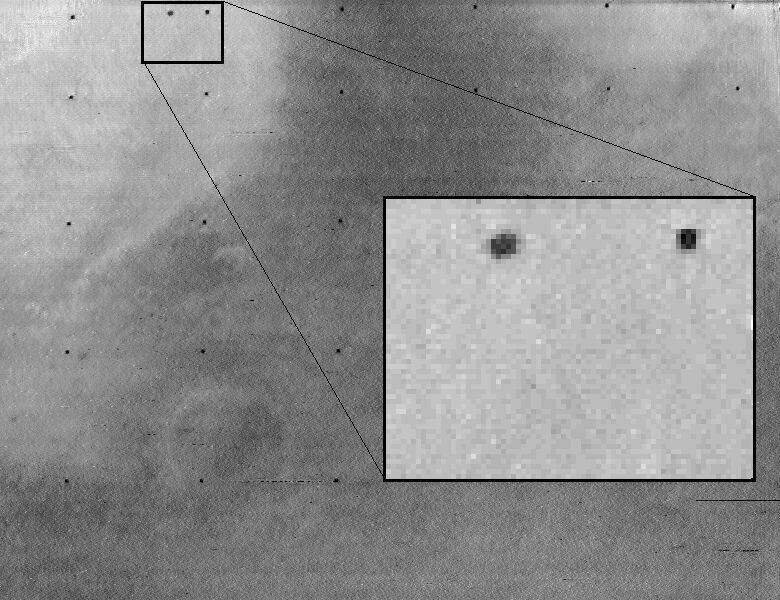
Left: Chaotic terrain photographed by Mariner 6. Right: Phobos (left black dot in inset) photgraphed by Mariner 7.
The photographs and science data returned by Mariner 6 and 7 significantly increased our understanding of Mars but also posed new questions. Missions that orbited and landed on the Red Planet followed in the 1970s.


























